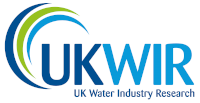Treated Water Storage Assets: Good Practise For Operation & Management V2
Why carry out the research? 
Service reservoirs, water towers and other treated water storage assets constitute a major asset base in Northumbrian Water, and the wider water industry. Managing these assets effectively ensures that drinking water is stored without its quality being compromised by either deterioration, poor operation or maintenance regimes. In order to manage these assets effectively now and in the future, Northumbrian Water, and other water companies, must understand good construction, operational and maintenance practices as well as strategies to allow better risk management and optimise whole life cost.
.
Northumbrian Water had been aware of this need for a number of years and proposed the research into the UKWIR programme. The project was initially carried out in 2016 with a report being produced (report no. 17/RG/05/48) but this has now been revised with updates to sections on ‘external roof membranes (section 10.11)’ and ‘intelligent membranes (section 13.4.4)’ plus the associated table in Appendix 5 (report no. 19/RG/05/50).
.UKWIR Guidance
The purpose of the project was to provide water companies with good practice guidance for the whole life management of the construction, refurbishment, repair, operation and maintenance of treated water storage assets.
The project was developed in conjunction with significant industry engagement, through two industry workshops involving representatives from UK Water Companies, Regulators, Academia and Industry, and five water company interviews. It was delivered by Mott McDonald on behalf of UKWIR.
The project provided:
- Guidance document which summarised good practices for the inspection, operation, maintenance, refurbishment, repair and new construction of treated water storage assets
- Complementary spreadsheet toolkit illustrating a process to support investment planning activities for treated water storage assets through a condition assessment, deterioration and risk modelling approach.
.
How Northumbrian Water have used the outputs
Northumbrian Water are using the outputs from this valuable research in a number of ways:
- Guidance Document
- It is referred to on a regular basis for feedback on repair materials, reference for condition scoring, etc.
- The asset health scoring system we use has been aligned with the report.
- It will be used as an integral part of the discussions on the design & construction of a new SR.
- It is being used to assist our maintenance activities. The prioritisation tool is used for our service reservoir cleaning and inspection programme. It supports our decision making for the prioritised list of ‘treated water structures candidates’ for the year.
- It will form a major resource for our SR asset plan which is part of a DWI response due in Sept-21.
- This is a major referenced source for the SR Asset Group Strategy and Asset Standard. It’s been particularly useful as a reference for items such as:
- roof covering - soil and grass or gravel. NWG now states 200mm of rounded gravel to deter animals and vehicles as per the good practice given in the report
- aligning NWGs asset health scoring system to the good practice contained within the document.
- The section that specifically covers the requirement to be included in a new SR will be utilised to update the design policy for SRs.
Toolkit
- Using the approach and data (look up tables, calculations, deterioration rates, etc.) provided in the UKWIR toolkit, we have developed a Service Reservoir tool which allows us to compare all our treated water storage assets at the same time.
- Our SR tool give us the ability to apply a conditional age to our treated water assets and to predict how the assets condition grades deteriorate over time.
- The SR tool has been expanded to cover:
- site risk = allow a value from either a water quality or structural point of view.
- Interventions = allows 1 intervention to be run from a choice of 4
- AMPs = allows running of scenarios over different AMPS to balance risk vs cost.
- The tool is still evolving = Phase 4 will include multiple interventions
- Deterioration information allows us to see how the asset base will deteriorate over time. It can be seen at asset base scale, for the first time, so the scale and cost of interventions necessary to maintain and improve this asset base is shown over decades.
- Our SR tool has been used in our Zonal Studies work. We have used the proposed refurbishment and replacement years to highlight how many structures in each system zone are going to need significant investment within the next few AMPS. It will provide a prioritised list, with some additions based on Ops information where they have not agreed with the recommended refurb / replacement year.
How research links to UKWIR Benefits
The work undertaken during this project covered a number of the benefits required to secure UKWIR funding. These were:
- Cost savings – The work has allowed more effective planning & decision-making process to be undertaken when reviewing site risk and maintenance activities.
- Cost avoidance – The research has allowed us to avoid having to undertake the work in-house to develop our SR tool.
- Collaboration and influence – The project has allowed Water Companies to tap into and evaluate good practice across the sector for in-house implementation.
- Development opportunities – The project has ensured that NWG are aware of new technologies / techniques used in the maintenance of SRs. It has also allowed NWG staff to be up to date on technologies / techniques that can be used in the design & construction of a new SR.
- Environmental and social – Using the approach and data from the project we are now able to compare SRs and how they deteriorate over time to ensure interventions are undertaken at the right time to ensure water quality is maintained and the risk of non-compliance is reduced.
“Without the UKWIR project Northumbrian Water would not have been able to produce our Service Reservoir Tool” Janet Ayre, Asset Planner
